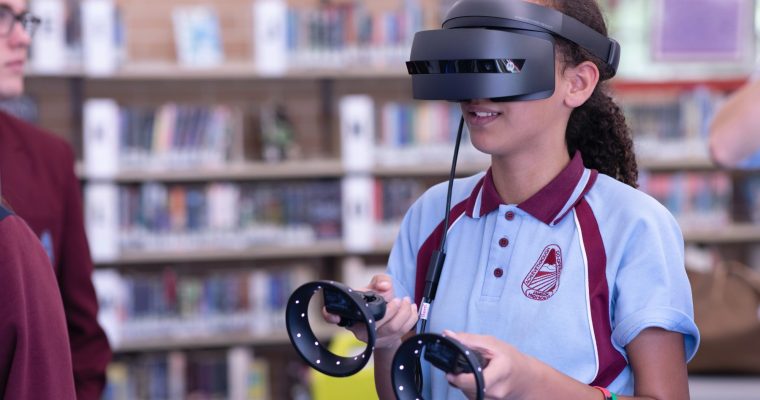Gone are the days of traditional classroom learning. The recent trend in training is the Augmented Reality (AR), and it’s only going to get bigger. However, when it was introduced some years back, people used it mainly for gaming purposes. But nowadays, many reputed organizations are using AR technology in training. It is because it improves learning outcomes through increased engagement and interactivity. So, how will it transform the eLearning industry? In this article, I’ll explain how AR works in eLearning.
What is augmented reality?
Before we dive into it, let us get familiar with the term AR. Augmented reality (AR) is a 3D interactive reality that connects a real-world scene with computer-generated elements. The simulation-based technology superimposes virtual effects onto the real world. One can use augmented reality in many ways, such as through AR goggles and smartphones. Combining the view of the immediate surroundings with computer graphics can manipulate the world in augmented reality.
Augmented reality (AR) should not be referred to as Virtual Reality, though some people use both terms interchangeably. Here is the difference between them.
Difference between Augmented reality and Virtual reality
For Virtual reality, the user is entirely in a 3D synthetic environment and can interact with the computer elements. But in Augmented reality, you are stuck in the real world, but you can also interact with the computer elements.
AR and E-learning
When learning experts introduced eLearning, learners use text, images, videos, clicks, and drags for learning. Augmented reality has brought something different to the eLearning world. And currently, it is one of the most sought out eLearning tools. Here are some of the Augmented Reality impacts on eLearning
1. It boost learners engagement
With beautiful 3D elements, every trainer is excited to participate in the lesson. AR is more unless, like gaming, this alone is enough to captivate your learners’ attention. For instance, teaching a geography class with a book atlas may look dull and uninteresting to many learners. However, if you teach the same level with an Augmented reality map, you’ll be surprised by the number of students that will turn up.
2. Safe training
The augmented reality provides safety training for employees by replicating a potentially dangerous learning environment that is not possible. Trainees can practice in this hazardous environment without getting injuries. Trainers acquire experience by performing tasks using simulated-based technology. For instance, Soldiers can learn how to repair high voltage equipment or dissolve a bomb without potentially putting themselves to risk. It will give them the knowledge before the time of war.
3. Reduce the cost of training
Some industries like aerospace, healthcare, aviation, military, and others invest large amounts of money and equipment into training their workers. But with the AR, these expenses are mainly reduced. For instance, in the military, money that is supposed to be spent on acquiring training equipment is reduced due to AR training. Another reason to consider is the amount of wear and tears that the machine will face if used for a training day in day out.
4. Learning on the go
Now every student that has a smartphone can learn anywhere, at any time. And that is one good thing eLearning and technology have brought to us. AR has made it more accessible. You can travel to a new country or state and learn about their language, culture, and location through augmented reality via your smartphone.
The future of AR in eLearning
There is a recent surge in AR smartphones. Also, several AR applications are being designed to aid learning. AR is here to stay, and it will be the future of eLearning. Let’s look at how AR will impact the different training sectors.
1. Medical and healthcare training
- Complex body structures are currently being improved to help medical students learn the anatomy of the human body.
- Doctors will be able to operate on virtual patients before going into the surgical room. The AR training will give them the freedom to learn and practice without fearing the negative impact on humans.
- An AR human anatomy atlas is being created to help the student to study human anatomy.
2. Space Industry
- NASA is creating AR for Mars exploration
3. Military training
A Synthetic Training Environment (STE) is currently being designed to create a realistic military experience for soldiers. It let them develop their experiences with the help of AR.







